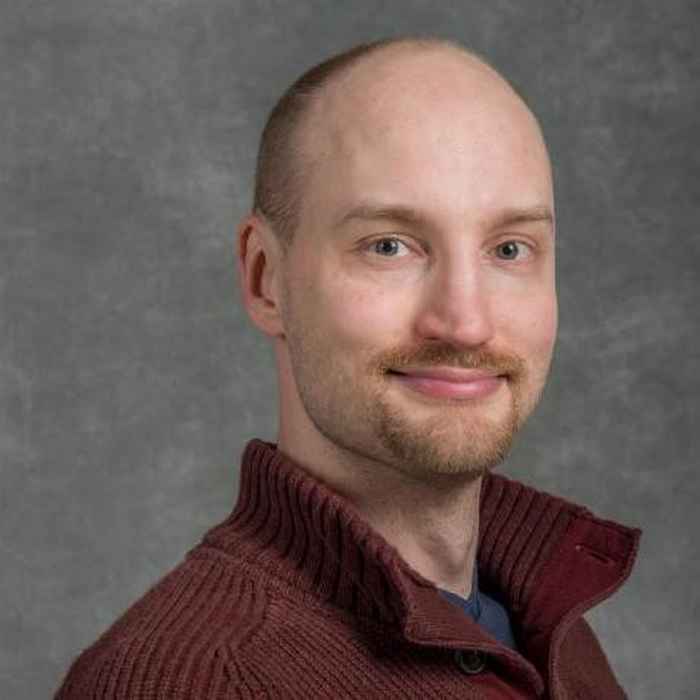Two new fellowships were awarded in the 20th call in October 2024.

Guest: Dr. Susi Lehtola, Department of Chemistry, University of Helsinki, Finland.
Hosted by: Dr. Jörg Meyer (Leiden University) and and Prof. dr. Lucas Visscher (Vrije Universiteit Amsterdam).
A visit of two months.
Ordinary matter is composed of atoms bonded together into molecules and crystals. Its structure and properties can be modeled with electronic structure calculations, which yield insight into chemistry, solid state physics, and
material science. The technology to perform such calculations is quite convoluted, and relies on various numerical approaches. The interpretability of the obtained results is also sometimes challenged by the complexity of the modeled systems.
A good strategy in cases where the complexity of the real system hinders attempts to obtain understanding is to rely on simplified models. Atoms' interactions with an environment can be modeled by embedding the atoms in a homogeneous electron gas (jellium). This atom-in-jellium (AiJ) model has been examined in a number of studies in the literature. However, the codes that have been developed for this purpose are difficult to maintain, or to extend to improved electronic structure methodologies that are nowadays routinely used in
other contexts.
Dr. Lehtola is a world-leading expert in modern finite element techniques for high-precision density functional theory (DFT) calculations for atoms. This relies on applying this expertise to the AiJ model in order to understand how atoms interact with their environment. The project will be used to provide electronic friction coefficients for describing beyond-Born-Oppenheimer effects on the dynamics of molecules on metal surfaces in the group of Dr. Jörg Meyer. The collaboration with Prof. Dr. Luuk Visscher will target extension of the models to include relativistic effects.

Electrochemical activation of Thiocarbonylthio Chain Transfer Agents during Cu-mediated Hybrid Atom Transfer/Degenerative Transfer Polymerization in the Presence of Oxygen
Guest: Dr. Francesco De Bon, University of Coimbra, Portugal.
Hosted by: Dr. Dennis G.H. Hettersheid, and Dr. Rik V. Mom (Leiden University).
A visit of two months.
The chemistry of molecular copper catalysts in Atom Transfer Radical Polymerization (ATRP) has been thoroughly elucidated, including the mechanism by which certain catalysts (specifically Cu-tmpa) reduce dioxygen at exceptionally high catalytic rates (turnover frequency >> 1 million turnovers per second). Current efforts are focused on exploring novel applications of these catalysts. It is well established that the same molecular Cu-catalysts exhibit high activity in ATRP, and this reaction can be driven electrochemically (eATRP). The presence of O2 poses a significant challenge in ATRP reactions such as radical polymerization. However, it can be performed in the presence of O2 when mediated by catalysts that rapidly react with O2, and in the presence of a hydrogen peroxide scavenger. Under such conditions, O2 is effectively removed, and polymerizations of up to 15 L in water or up to 10 L in emulsion can be obtained. The potential expansion of activation/deactivation by inner-sphere electron transfer to thiocarbonylthio chain transfer agents (CTAs) for Reversible Addition-Fragmentation Chain Transfer (RAFT) polymerization remains mostly unexplored. We recently reported a synergistic hybrid polymerization mechanism that combines ATRP and Degenerative Transfer (the mechanism of RAFT) in an emulsion, in the presence of O2, and is catalyzed by Cu-tmpa. However, the rate of potential activation of CTA by Cu-tmpa (and other Cu catalysts) has not been described or quantified. This visit will help to better understand how the two mechanisms behave when operating simultaneously, which is essential for predicting the behavior of this promising hybrid polymerization and designing more efficient and selective Cu-based catalysts. The research period will focus on the fundamental electrochemical activation/deactivation of CTAs, such as amphiphilic alkyl dithiobenzoate (CTA), suitable for a wide range of monomers (methacrylates, acrylates, acrylamides, and styrenes). The electrochemical investigation will be completed by in-situ characterization of the species present within the reaction mixture and evaluation of the potential activation of CTAs by Cu0 surfaces, taking advantage of operando surface-enhanced Raman spectroscopy (SERS).